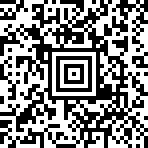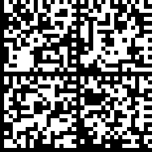Since the introduction of the Insert From Device script step in FileMaker 13, FileMaker Go has become a powerful barcode scanner for iOS devices. FileMaker has released updates as both iOS and Apple hardware has progressed, and FileMaker Go 18 is no exception. The latest version of FileMaker Go now supports four new barcode types. More than just a simple number—let’s take a look at what these new barcode formats are, and how they are commonly used.
PDF417 barcode

Even though this barcode has been around since 1991, you’ve
probably seen it on the back of your driver’s license or other ID cards more
recently. You may have also seen it on a piece of mail you’ve received. PDF417 (along
with Data Matrix) is one of the 2D barcodes accepted for postage printing.
Another common place you’ll see it is on boarding passes at the airport. So
even if you weren’t aware of what format this was, chances are you’ve recently
seen a PDF417 barcode.
The PDF417 barcode is a 2 dimensional “stacked” barcode, which means that it’s divided up into different sections that are “stacked” into the final result. These five sections are decoded by FileMaker Go into a text value, so Insert From Device can be used to capture the barcode data into a text field.
ITF-14 barcode

Chances are if you flip over your latest Amazon Prime
delivery box, you’ll find an ITF-14 barcode somewhere on it. Comprised of 14
digits encoded into an interleaved barcode, the ITF-14 format is usually used
to identify packaged quantities of items, like a case of boxes or other
products. So rather than a specific unique key, the barcode would be the same
on every item in that case.
The thick black border, called a bearer bar, is designed to be used by printing presses to get a more reliable print and readability when scanned.
AZTEC barcode

One of the more powerful Data Matrix style barcodes, the
AZTEC format is a now-public-domain format that is used extensively by the transportation
industry (for things like mobile device boarding passes in apple wallet),
Government (document verification) and commercial applications (invoices).
Cool fact about this one: the name of the barcode comes from the “finder,” which is that set of squares at the center of the barcode that a scanner uses to position the scan to extract the data. This finder looks like an Aztec pyramid, hence the name AZTEC!
Data matrix barcode

The last of the new formats supported in FileMaker 18 is the data matrix format. Tiny but powerful, the data matrix can hold up to 50 characters of information readable as small as 2mm in size. This makes it the perfect barcode for micro applications, such as identifying electronics components with permanently etched codes. It’s also expandable and can be “stacked” to support larger amounts of data. More modern applications include date labels from the food industry that prevent tampering with expiration dates.
The new barcode formats are also supported in the FileMaker
Go App SDK, allowing fully compiled iOS apps to be deployed supporting these
formats. With these new barcode formats, FileMaker continues to improve the
usability of FileMaker Go in robust commercial mobile applications.
About the Author

Mike Beargie has been with MainSpring since 2013 and has over 10 years of application development experience. As a developer, he creates solutions for clients in a wide variety of sectors across the U.S. and abroad. Prior to working at MainSpring, Mike worked as the lead developer for a consulting company, serving high profile political, special interest and nonprofit clients in the Washington, D.C., and Columbus, Ohio, markets. Mike regularly presents solutions and best practices to the FileMaker development community around the country, and is well known as an answer man online as well. In 2014 and 2016, Mike was recognized with the FileMaker Excellence Award for community contributions. Mike is a man of many hobbies, including woodworking, home brewing, art and music.
